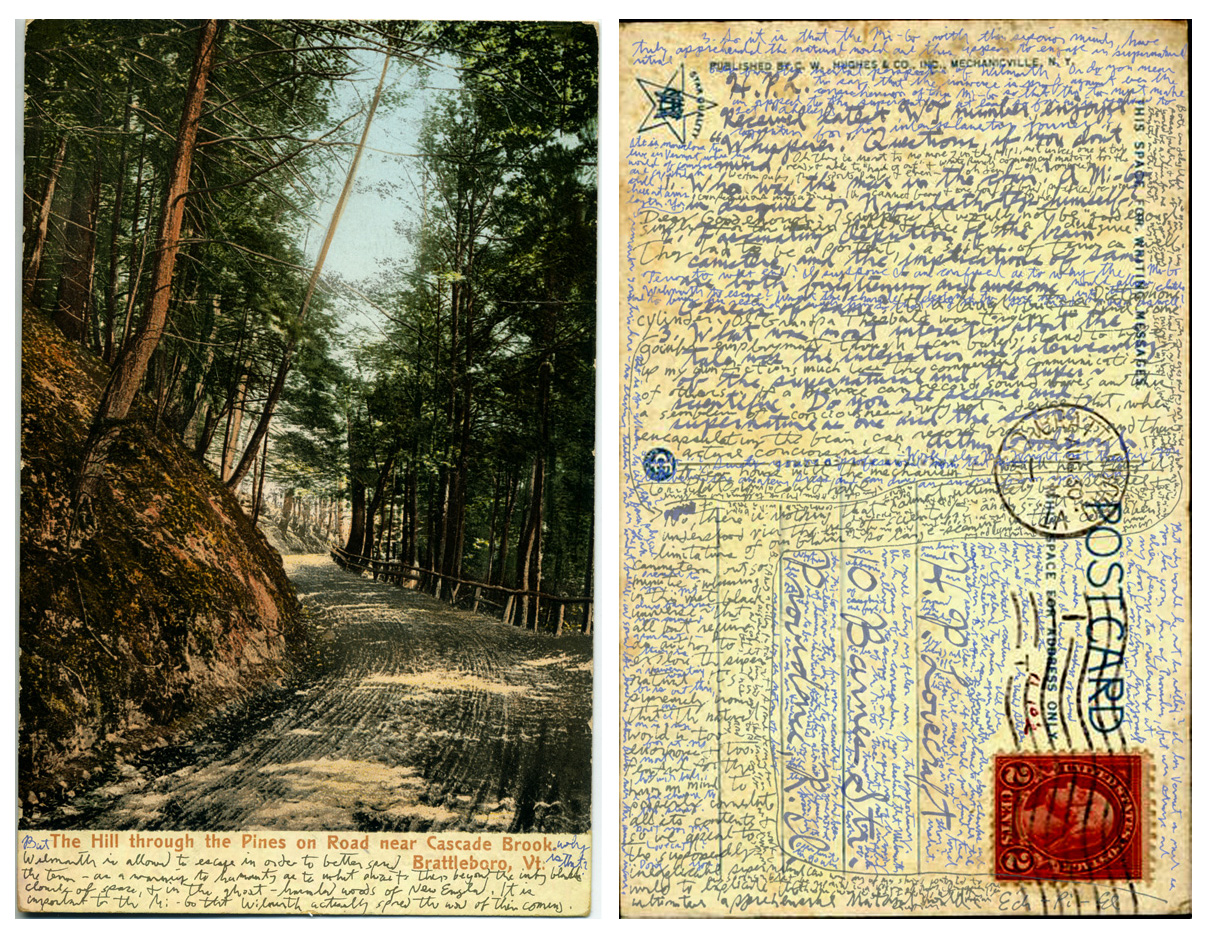
Nick Mamatas (author of such wonderful books as Sensation) formerly lived in Battleboro, VT, once home to amateur press enthusiast Arthur H. Goodenough, who was a correspondent of HP "Cthulhu" Lovecraft's. Nick discovered a postcard containing an interview between Goodenough and Lovecraft, entirely conducted on a single postcard. Goodenough kicked it off by sending Lovecraft a postcard with some questions, and Lovecraft answered them in minute writing in the whitespace on the card, using a sewing-needle dipped in ink, then posted it back to Goodenough. Seriously.
Mamatas and a friendly googler who specializes in fonts managed to transcribe the card, and the link below contains the whole interview.
Lovecraft was acquainted with Goodenough, and Lovecraft’s visits to Goodenough in Vermont in 1927 and 1928 are the basis of his wonderful novelette “The Whisperer in Darkness.” After the story was published in Weird Tales, Goodenough sent Lovecraft a congratulatory card, and also asked the author a couple of questions. Rather than responding with a card or letter of his own, Lovecraft wrote the answers in a tiny hand and then apparently gave the card to Vrest Orton — a bookman and eventual founder of The Vermont County Store — who returned the card to Goodenough personally during a trip to the Green Mountain State. Then Goodenough sent the card back to Lovecraft again, with follow-up questions written in a nearly microscopic hand. I suppose he knew the local postmaster, and was able to get the card back into the mail system without a problem. Amazingly, Lovecraft managed to fit the answers to the questions on the postcard in an even smaller hand. Sherwood told me that he’d guessed that Lovecraft used a magnifying glass and a sewing needle dipped in ink. Here’s an odd thing; Sherwood had found the postcard at an estate sale. It had been protected from the elements because it had been used as a bookmark in a 1935 number of The Revelator, and that number was a special issue dedicated to the “gothic tales” of Isak Dinesen.
I bought the card and kept it with me for years — I moved to Boston, and then to California. Only recently have I been able to spare the time to closely examine and transcribe the postcard. It took a few weeks. Lovecraft’s handwriting was difficult to read in the best of times, as I learned in 2007 when writer Brian Evenson took me and my friend Geoffrey Goodwin to the library at Brown University to check out some of Lovecraft’s papers. If anything, Goodenough’s penmanship is even worse, especially in the last unanswered round of questions. There are a few ink splatters on the postcard as well, but only one seems purposeful, as I make note of below. I took the card to work and abused my photocopy and scanner privileges to blow up sections of the card, then turn them into a series of PDFs. I then zoomed in on the PDFs as much as I could, to turn the tiny letters into great abstract shapes, to better see what we would call “kerning” if the text had been typset. To decipher this postcard, I not only had to read between the lines, as it were, but I had to make sure I was properly reading between the letters.
Brattleboro Days, Yuggoth Nights
(via JWZ)
Комментариев нет:
Отправить комментарий